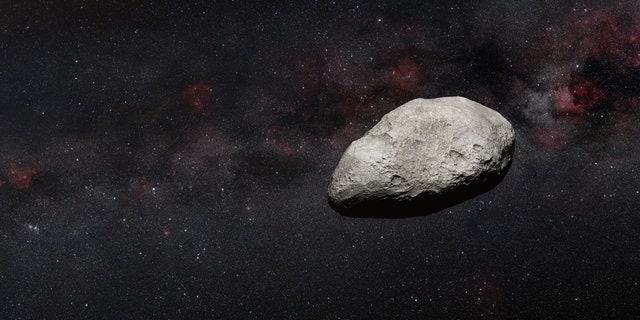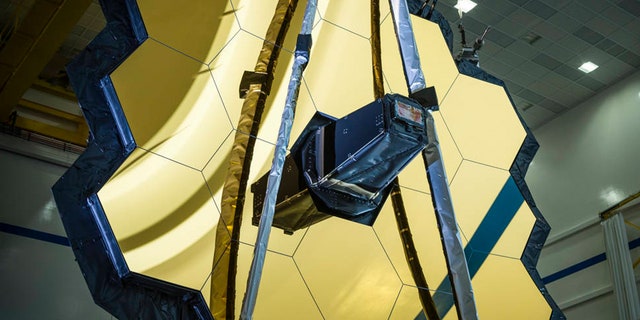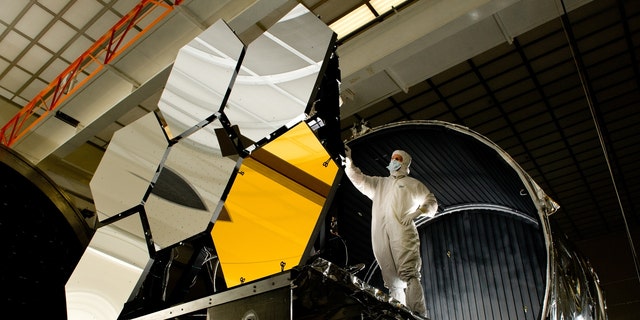The James Webb Space Telescope accidentally found an asteroid, and NASA says it’s likely the smallest observed to date by the observatory.
International astronomers detected an asteroid roughly the size of Rome’s Colosseum, between 300 and 650 feet in length.
The space rock was found when analyzing data from the calibration of the Mid-InfraRed (MIRI) Instrument.
While more observations are necessary to better characterize this object’s nature and properties, it may be an example of an object measuring fewer than 0.6 miles in length within the main asteroid belt between Mars and Jupiter.
NEIL DEGRASSE TYSON SAYS JAMES WEBB SPACE TELESCOPE IS WINDOW TO UNIVERSE ‘NEVER BEFORE ACHIEVED’

An illustration of an asteroid. The asteroid roughly the size of Rome’s Colosseum – between 300 and 650 feet (100 to 200 meters) in length – has been detected by an international team of European astronomers using NASA’s James Webb Space Telescope. (Credits: ARTWORK: N. Bartmann (ESA/Webb), ESO/M. Kornmesser and S. Brunier, N. Risinger (skysurvey.org))
“We – completely unexpectedly – detected a small asteroid in publicly available MIRI calibration observations,” Thomas Müller, an astronomer at the Max Planck Institute for Extraterrestrial Physics in Germany, said in a statement. “The measurements are some of the first MIRI measurements targeting the ecliptic plane and our work suggests that many new objects will be detected with this instrument.”
The observations were published in the journal Astronomy and Astrophysics. They were not designed to hunt for new asteroids and were calibration images of the main belt asteroid 1998 BC1. The calibration team considered the observations to have failed for technical reasons, but data on the asteroid 10920 were used by the team to establish and test and new technique to constrain an object’s orbit and to estimate its size.

The James Webb Space Telescope seen on March 5, 2020. (NASA/Chris Gunn)
HUBBLE SPACE TELESCOPE CAPTURES STUNNING NEW IMAGE OF TARANTULA NEBULA
In an analysis of this data, the team’s results suggest the object measures 100–200 meters, occupies a very low-inclination orbit and was located in the inner main-belt region at the time of the Webb observations.

Ball Aerospace lead optical test engineer Dave Chaney inspects six primary mirror segments, critical elements of NASA’s James Webb Space Telescope, prior to cryogenic testing in the X-ray & Cryogenic Facility at NASA’s Marshall Space Flight Center in Huntsville, Ala. (Credit: NASA/MSFC/David Higginbotham)
Small asteroids have been studied in less detail than larger asteroids due to the difficulty of observing such objects. If confirmed as a new asteroid discovery, this detection would have implications for the understanding of the formation and evolution of the solar system.
CLICK HERE TO GET THE FOX NEWS APP
In order to confirm that the object is a newly discovered asteroid, more position data relative to background stars is required.
The Associated Press contributed to this report.
